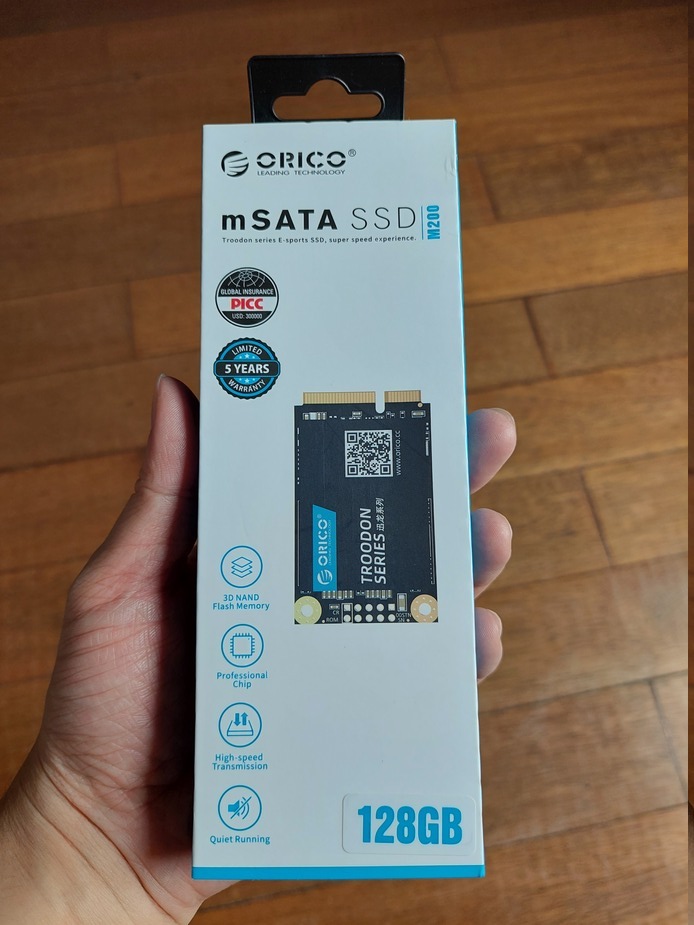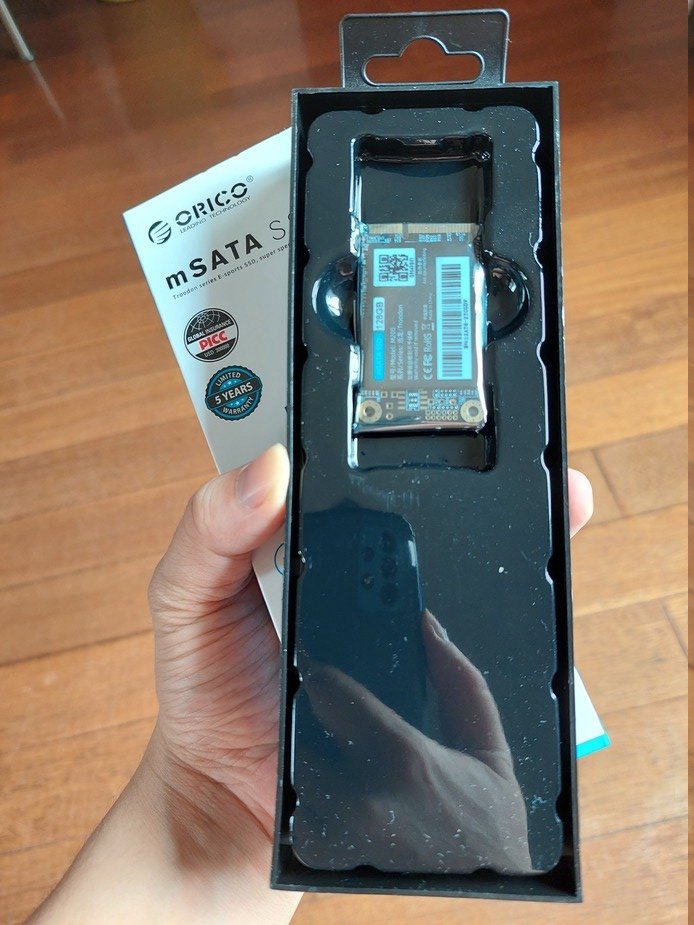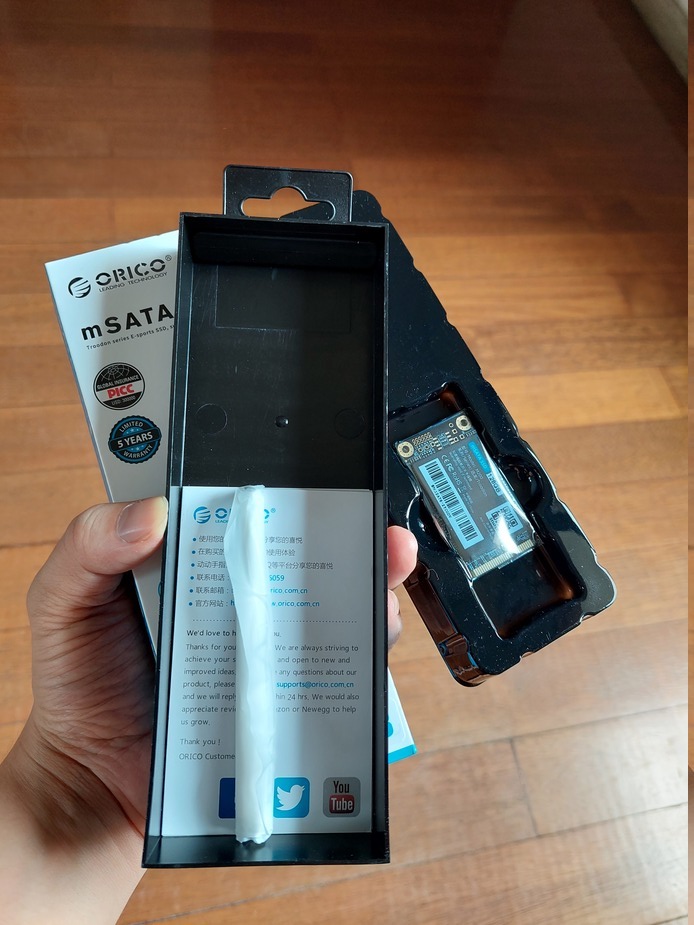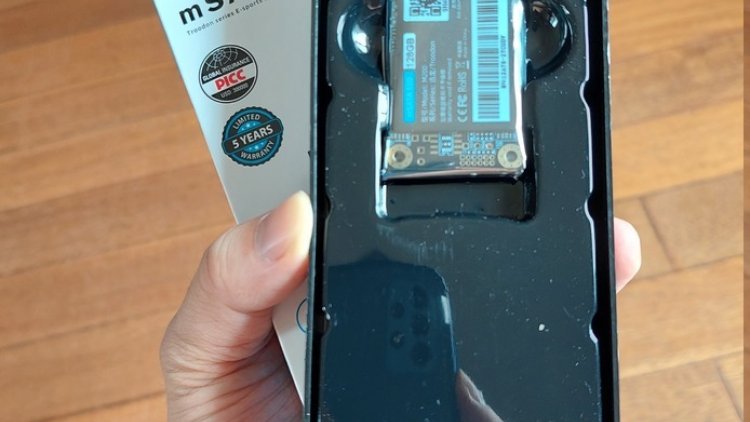It wouldn't be my system if I don't customize it!
Right now, ony my X230, I got a Debian system on encrypted mSATA SSD, on which I am writing this article and the next ones onward.
Storage
I put mSATA drive on the mPCIe slot not populated by the WiFi card. For it, I got 120 GB drive from Orico.
For an mSATA drive, being small as it's supposed to be, the box was hilariously humongous. I mean, just look at this thing!



The regular SATA drive remained. I installed a Linux Mint system for work. That way, my work stuff don't intermingle with my personal stuff (at least regarding the data).
Network
I happened to have this spare Atheros WiFi card. One of the plus is the fact it doesn't require extra firmware. As trying to be minimal was my goal, I decided to give it a try.
The performance turned up to be below the Intel WiFi card that originally came with the laptop. Also, it doesn't support 5GHz.
In the end, I decided to put the Intel WiFi card back.
Disabling Intel ME driver
I know I've disabled the ME from being loaded thru the firmware.
Now I wanted to get rid of the errors on the boot time caused by not having the ME running. The message was harmless, but I was annoyed by it.
To do that, I simply had to blacklist its driver. It is contained in a kernel module called mei_me.
As root, I created a new file /etc/modprobe.d/blacklist.conf with the content:
mei_me blacklistAfter a restart, the message never appear anymore.
GRUB2 menu generations
To the /etc/default/grub, I added:
GRUB_DISABLE_OS_PROBER=true
GRUB_DISABLE_SUBMENU=trueThe above does two things:
- ensure external OS detection (through os-prober) is disabled
- keep the menu flat without submenus
fstab
I wanted to add /dev/sda5 as data partition available everytime. For that, I added this to the fstab.
Since the name /dev/sda5 may not remain the same everytime, at least in theory as devices can come and go, it is standard practice to have UUID instead.
To get the UUID of /dev/sda5, I simply ran:
# blkid -o value -s UUID /dev/sda5I copied and pasted the returned value to fstab, without forgetting to put in on standard format.
UUID=2e8ce9ea-6d83-7549-9907-e0a78df52a49 /mnt/data btrfs defaults,discard=async,noatime 0 1Power management
To cut down on unnecessary power consumption, I use powertop.
First, I needed to calibrate it. I ran powertop --calibrate and waited a while as the laptop did funky stuff like toggling the screen on & off, then the wireless, etc...
After that, to ensure the auto-tune gets executed everytime, I simply added to the rc.local:
powertop --auto-tuneJust had to ensure that the file ends with exit 0. Don't ask me why, it's the rule!
Disk encryption
For some reason, the GRUB2 was configured to get the themes from /usr/share/.
This would usually works, except when this path is unavailable during boot. This is such the case when the main partition is encrypted.
The result is improperly rendered bootloader menu screen.
Thankfully the fix was simple.
First, I copied background image file /usr/share/desktop-base/homeworld-theme/grub/grub-16x9.png to /boot/grub/
Then, on /etc/default/grub, I set GRUB_BACKGROUND to /boot/grub/grub-16x9.png.
Last but not least, I ran update-grub2.
The next time I booted my computer, I was greeted with the nice background as it's supposed to.


